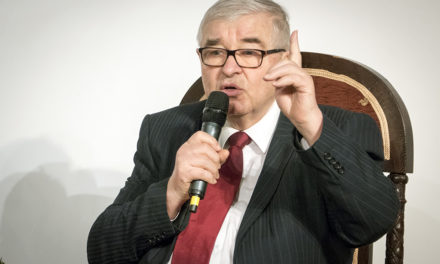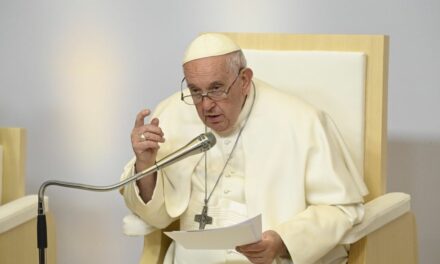King László I was canonized on June 27, 1192.
During his life, he was a valiant prince, a good brother, a tough lawmaker, after his death he became a hatchet-wielding saint, the most popular and beloved crowned hero of our folklore before King Matthias. From a sacral point of view, his life and afterlife form a unique unity: our only ruler who became a king who consecrated a saint and a king who was canonized.
László was born around 1040 in the Kingdom of Poland. His father was the Hungarian king Béla I, and his mother was the Polish princess Richeza from the Piast dynasty. Béla and his wife had a total of seven children - László was the second born.
He spent the first years of his life on Polish soil, where his father moved in 1030 after being exiled from Hungary.
According to the first Polish chronicler, Gallus Anonymus, he almost became a Pole, as he adopted Polish customs. He returned home from Poland around 1048 with his father's family.
Béla received the duchy, which represented a third of the country. László participated in the coronation of King András I's son, Prince Solomon, who was still a child at the time, to which he, along with his father and brother, gave his consent.
After the death of King Béla I, Dukes Géza and László recognized their cousin Solomon as the legitimate king, with whom they had a good relationship in the following decade. The well-known story of the girl kidnapped by the Kun comes from this era. The relationship soured in the 1070s and the princes rebelled against Solomon.
Géza won the throne in 1074, but Solomon continued to rule in the western border region of the country.
At this time, László was Géza's chief advisor.
After Géza's death, his followers sided with László and made him king. Solomon IV He resisted with Henry's help; László in the investment fight IV. Henrik supported his opponents. Solomon abdicated in 1081, but after that he still tried to regain the crown. Because of this, László imprisoned him, but two years later he was released on the occasion of the canonizations.
After a series of civil strife, László had to restore public safety, punishing theft and robbery with mutilation or death.
In 1091, it occupied the largest part of Croatia, which marked the beginning of the expansion of the medieval Kingdom of Hungary.
In the east, he defeated the Kuns and the Pechenegs, securing the eastern borders for 150 years. In the last years, his relationship with the Holy See deteriorated precisely because of the Croatian conquest, because the pope considered the acquired Croatian territory as his own fiefdom, but László did not recognize this.
The legends present László as a benevolent knight-king, as the embodiment of the chivalric ideal of the late chivalry.
According to the sources, László was a strong, huge man who "stood out among other people". He retained his great physical strength even around the age of fifty. As a result of his skill in fighting and his personal bravery in battle, he gradually became very popular. The Knight King is also called God's athlete because of his outstanding physical attributes.
III. It was given by Béla, who in June 1192 III. With the approval of Pope Celestine, László I was canonized as a saint. As a result, the emerging Hungarian knightly culture and lifestyle saw him as its role model.
He is a popular saint in Hungary and the surrounding countries, he is the patron saint of many churches.
In 1083, the founder of the state King István, as well as his son Prince Imre, Bishop Gellért and two hermits from Zobor, András and Benedek, were consecrated as saints.
A number of relics and material memories that have survived to this day can be associated with the canonized King László.
An example is the St. László Herma in the Győr Basilica, as well as his right one, which is preserved in the Franciscan Monastery in Dubrovnik.
Cover image: Bronze equestrian statue of King Saint László in Nagyvárad Castle
Source: MTI/Zsolt Czeglédi













